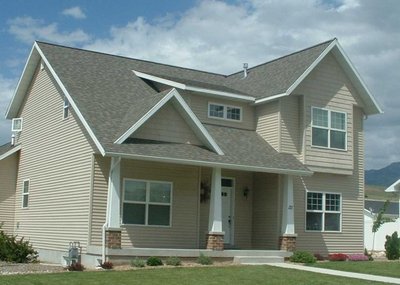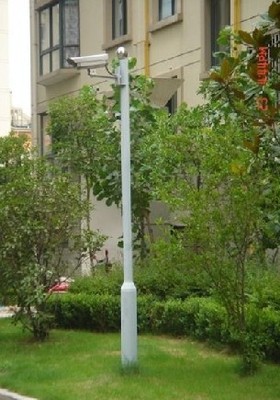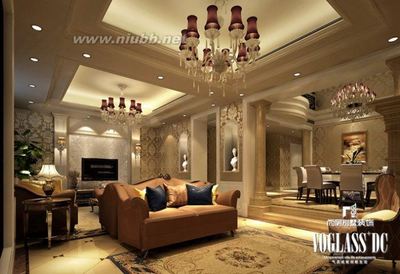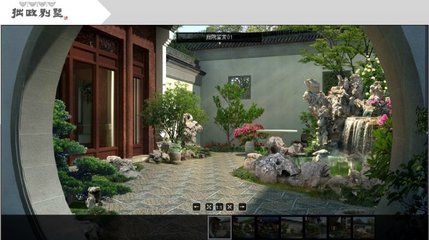美式别墅住宅建造过程分解——04
(上接:美式别墅住宅建造过程分解——03)
•Rough HVAC
暖通空调安装
(初装通风和空调设备)
•Insulation
绝缘 / 保温隔热
(保温)
•Drywall
石膏板墙面
(安装无浆墙板)
•Underlayment
铺垫
(铺设屋面衬垫材料)
•Trim
装饰
(修整)
•Painting
粉刷
•Finish electrical
完成电气安装
(精装电气线路)
•Bathroom and kitchen counters and cabinets
浴室和厨房柜台和橱柜
(安装浴室和厨房的橱柜)
•Finish plumbing
完成水管安装
(精装上下水)
•Carpet and flooring
地毯和地板
(铺设地毯和地板)
•Finish HVAC
空调安装完成
(精装通风和空调设备)
•Hookup to water main, or well drilling
连接水管,或钻井
(连接自来水总管,或挖设水井)
•Hookup to sewer or installation of a septicsystem
连接下水道或安装一个化粪池系统
(连接下水道或安装排污系统)
•Punch list
剩余工作清单
(列出剩余工作的清单)
Many of these steps areperformed by independent crews known as subcontractors. Forexample, the framing is generally done by one subcontractorspecializing in framing, while the roofing is done by a completelydifferent subcontractor specializing in roofing. Each subcontractoris an independent business. All of the subcontractors arecoordinated by a contractor who oversees the job and is responsiblefor completing the house on time and on budget.
在这些工作中,很多都是由那些被称为分包人的工人们完成的。例如,构建房屋框架的工作通常由一个专业进行构建框架工作的分包人完成,而房屋封顶的工作则是由一个完全不同的擅长于封顶工作的分包人完成的。每个分包人承担的都是一桩独立的生意。所有这些分包工作都由一个承包人统一协调,他监督这些工作,确保工程按时完工,并将支出控制在预算范围内。
We will walk through thesedifferent stages so that you can see what is involved, understandall the steps and learn about the different materials used in theconstruction process. We will use a typical three-bedroom home asour example.
我们将会对这些不同的步骤进行介绍,这样您就能了解房屋的建设过程中包含了哪些事物,有哪些步骤,还会了解整个建设过程中会用到的各种不同的材料。在此,我们会以建造一个典型的三居室的房间作为例子。
Site Preparation
现场准备工作
(场地准备)
The first crew on the sitehandles site preparation. Often, this crew and the foundation creware the same people, but sometimes not (especially if there are alot of trees on the lot). Houses are generally built on afoundation that is either a basement, a crawl space or a slab. Thesite-preparation crew typically arrives on the site with a backhoeand/or bulldozer. The crew's job is to clear the site of any trees,rocks and debris, level the site if necessary and dig as necessaryfor the foundation being built.
最先来到的施工人员,进行的是场地准备的工作。这些工人和建造基础的人通常就是同一批人,但有时候也不尽然(特别是当场地上有很多树时)。房子会建在一个基础上,这些基础通常是地下室、半高地下室或板式基础。进行场地准备工作的工人,通常会带一台锄耕机和/或一台推土机到工地。施工人员的任务是清除场地上的所有树木、岩石和废墟,如果必要的话,还要对地面进行平整和挖掘工作。
The example house shown hereis built on a crawl space. For a crawl space, the site preparationcrew digs a set of trenches and holes. Concrete is poured intothese trenches and holes and will act as the interface between thefoundation wall and the ground. Once the concrete is poured, thehouse looks like this:
我们在此处展示的例子是建立在一个半高地下室((即,爬行空间——地下架空层基础)上的房屋。对于在半高地下室上建房的情况,场地准备人员需要挖一系列的沟渠和洞。混凝土被浇筑进这些沟渠和洞中,成为房屋的基墙和地面的交界面。混凝土一旦进入沟渠和洞中后,房子看上去就会类似下图所示:
(In these pictures, thebricks for the crawl space have already been moved into positionwhile the concrete cures.) The concrete in the trench is generallyabout 18 to 24 inches wide (45.72 to 60.96 cm) and 18 to 24 inchesdeep. Once it hardens, it forms a massive concrete "beam" on whichthe house rests. The width of this concrete beam is controlled bythe compressibility of the soil. In light soils, the beam will bewider to try to spread out the load, while in heavy clay soils itcan be narrower.
(在以上图片中,混凝土在慢慢固化,用于建造半高地下室的砖块也已准备到位。)沟渠上的混凝土大致有 45.72厘米至60.96厘米宽和45.72厘米至60.96厘米深。混凝土凝固后,会形成一个很大的混凝土“梁”,房子就建在这个梁上。这根混凝土梁的宽度是由泥土的压缩性决定的。在松土上,这根梁会造得更宽一些以分担载荷,而在较实的粘土上混凝土梁则会更窄些。
If the site slopes, theconcrete beam is stepped, like this:
如果场地倾斜,那么混凝土梁则被制成阶梯状,如下图所示:
Concrete takes approximatelyfour weeks to cure to full strength (depending on the weather), soonce the concrete is poured nothing will happen for some period oftime while the initial curing takes place.
混凝土需要有大约四周的时间,进行固化以达到它的最大强度(具体时间取决于天气情况),因此,一旦混凝土被浇筑进去以后,在固化的最初的一段时间内会暂时停工。
If this house had been builton a basement, the site-prep crew would have dug a square holeabout 8 feet deep. If this house had been built on a slab, thesite-prep crew would have trenched around the outside approximately2 feet deep and then completely leveled the area for thepad.
如果将房屋建在一个地下室上,那么进行场地准备的工人们会需要挖掘一个深约2.44米的方洞。如果这座房屋是建在一块厚板上的,那么进行场地准备的工人们需要在外围挖一个深约0.61米的沟渠,然后对板周围的地面进行彻底平整。
Foundation
基础
Slabs, basements and crawlspaces are the three main foundation systems used on houses. In wetand coastal areas, it is sometimes common to put houses up on postsas well.
板式基础、地下室和地下架空层基础是用来建造房屋的三种主要的基础系统。在潮湿地带和沿海地区,人们有时候还常常将房子建在桩体上。
Slab
板式基础
The slab is probably theeasiest foundation to build. It is a flat concrete pad poureddirectly on the ground. It takes very little site preparation, verylittle formwork for the concrete and very little labor to create.It works well on level sites in warmer climates -- it has problemsup north because the ground freezes in the winter and this freezingcan shift the slab at worst and at least lead to cold floors in thewinter. A cross-section of a typical slab looks likethis.
板式基础也许是最方便建成的基础了。它是一块直接置于地面上的平整的混凝土板。它所需要的场地准备工作、房屋框架构建工作和人工都很少。在气候温暖的地方,这种基础在水平地面上效果非常好——但在北方却会产生问题,因为冬天时地面会结冰,最严重时能造成板式基础滑移,最轻也会使屋内地面变冷。一块典型板式基础的横断面如下所示:
Around the edge of the slab,the concrete forms a beam that is perhaps 2 feet deep. The rest ofthe slab is 4 or 6 inches thick. A 4- or 6-inch layer of gravellies beneath the slab. A 4-millimeter sheet of plastic lies betweenthe concrete and the gravel to keep moisture out. Embedded in theconcrete is 6-inch by 6-inch wire mesh (shown by the dotted line inthe slab) and steel reinforcing bars (shown by the white circles atthe bottom of the beams). You will often hear this sort offoundation referred to as a "floating slab" -- it "floats" on thesoil, with the deeper concrete around the edge holding it in place.In northern climates, the concrete around the edge has to extenddeep enough to remain below the frost line in winter.
在板式基础的边缘处,有一个由混凝土形成的深约0.61米的梁。板式基础的其余部分有10到15厘米厚。板式基础下面是10到15厘米厚的砂砾层。在混凝土和砂砾层间有一个4毫米厚的塑料层,它用来防止湿气的进入。在混凝土的内部,有一个15 x 15厘米网孔的金属网(如图中厚板上的虚线所示)和加强钢筋(如图中梁底的白圈所示)。人们常将这种基础称为“浮式板”——它“浮”在土地上,而边缘处深埋的混凝土梁则将它固定不动。在北方的气候条件下,板边缘处的混凝土梁,需要延伸至冻深线以下。
One thing about a slab isthat the sewer pipe, and sometimes much of the electrical conduit,has to be put in place before the concrete is poured. The sewerpipes are actually embedded in the slab.
关于板式基础的一个值得注意的问题是下水道管,有时候还有很多的电线,都必须在混凝土浇筑前铺设好。下水管道实际上是内嵌在厚板中的。
Basement
地下室
A house with a basementstarts with a hole about 8 feet deep. At the bottom of the hole isa concrete slab, and then concrete or cinder-block walls form theouter walls of the basement. Actually, a basement is poured inthree pieces in most cases: the "beams," then the walls, and thenthe slab inside the walls, like this.
建造以地下室为基础的房子时,首先要挖一个深约 2.44米的洞。在洞的底部是一块混凝土板,地下室的外墙是用混凝土或煤渣砖建成的。实际上,地下室在通常情况下都会被浇注成三块:“梁”,然后是墙壁,最后是墙内部的厚板,如下图所示:
This approach helps keep thebasement waterproof. The L-shaped piece is a steel reinforcing barto bind the beam and the wall together.
这种方法,使得建成的地下室具有防水功能。L型的钢筋将梁和墙壁连在了一起。
Crawl Space
爬行空间(地下架空层基础)(或者叫“半高地下室”)
A crawl space has severaladvantages over basements and slabs:
地下架空层基础相对于地下室基础和板式基础而言,有几个好处:
•It gets the house upoff the ground (especially important in damp or termite-proneareas).
它使房屋向上脱离地面(这在潮湿或白蚁频繁出没的地区尤为重要)。
•It is a lot lessexpensive than a basement and comparable in price to aslab.
它的建设费用远比地下室基础便宜,与板式基础的成本相当。
•Duct work and plumbingcan run in the crawl space, meaning that they are easy to serviceand move over the lifetime of the house.
地下架空层基础内部,能铺设管道,这意味着它们在房屋的使用期内,能比较方便地维修和更换。
Most of the time, a crawlspace is made of cinder block with a brick facing.
多数情况下,地下架空层基础都是由煤渣砖铺成的,外层则是砖石,如右图所示。
This is exactly how oursample house is put together. The picture above shows how thefinished foundation looks.
这正是我们的样板房建成的过程。以下是基础建完后的样子:
You might have noticed inthe previous pictures that the concrete work for the crawl spacewas not done with much precision at all. One of the neat thingsthat the mason (bricklayer) does is carefully adjust the height ofthe cinder blocks and bricks with mortar thickness so that thecrawl-space walls end up exactly level all the wayaround.
您也许已经在前面的图中发现了,在地下架空层基础建造过程中,混凝土浇筑工作,并没有非常精细。细心地调整煤渣砖的高度和砖上的泥浆厚度是瓦工的强项,他们能使得地下架空层基础墙上的顶面,处处平整。
One problem that arises incrawl spaces and basements is dampness. In order to keep water out,perforated pipe and gravel are used in a trench around the crawlspace to route water away. The drainage system looks likethis:
潮湿是地下架空层基础和地下室基础建设中的一个问题。为了防止水进入,人们在半高地下室四周挖设的沟渠中铺设了带孔的管道和砂砾层以导出水。整个排水系统如下图所示:
In a house with a basement,this same sort of drainage system is added along the bottom of thewalls. The basement walls are then generally insulated with rigidfoam board and then heavily waterproofed before dirt is backfilledagainst the walls.
在有地下室的房屋里,人们也沿着墙壁的底部安装了同样类型的排水系统。然后将地下室墙壁用牢固的泡沫板与外面大致地隔绝起来,在墙壁落满尘土前再加上严密的防水设施。
Floor
地板
The framing crew is the nextgroup of people on the site. They start by building the floor(unless the house uses a slab foundation, in which case the slab isthe floor). The floor framing looks like this:
搭建房屋框架的工人,是第二批进行现场施工的人员。他们的任务首先是铺设地板(除非使用的是板式基础,在这种情况下,板式基础的底板就作为房屋的地板)。地板框架如下图所示:
The floor starts with asill-plate made of pressure-treated lumber in direct contact withthe bricks of the crawl space wall. One interesting thing to noteis that this house literally "sits" on the foundation -- it is notheld on or bolted on in any way. Then the floor is constructed onthe sill with 2x10 lumber:
铺设地板时,首先将一块由经过(防腐药液)加压处理的木料制成的底板,直接放在地下架空层基础墙墙体的的砖块上。有趣的是,这座房屋,实际上是“坐”在基础上的——它没有采用任何方式的维系或固定。然后人们再将2x10的木材架设在底板上:
You may have noticed thebrick posts when you saw the picture of the foundation. They hold abeam that runs down the center of the house. The beam is also builtfrom 2x10 lumber (three pieces thick):
在查看基础图片时,您或许已经注意到了房子里的砖石柱。它们支撑了一根直抵房子中心的梁。这根梁也是由2x10的木材建成的(有三块板厚):
All of the "joists" (as the2x10s in the floor are called) meet on this center beam:
所有的“龙骨”(这些2x10的木料)都和这根中心梁相接:
(In many houses themeeting of the joists is somewhat better organized!)
(在很多房子里,龙骨的接合有更好的方式!)
This funny littlecantilevered section of the frame will eventually hold thefireplace:
整个框架中,这个有趣的小悬臂梁部分,最后将用来安放壁炉:
Once the floor framing iscomplete, it is covered with 1/2-inch or 5/8-inch plywood or OSB(oriented strand board).
当搭建地板框架的工作完工时,人们就会立刻在地板上铺上 12.7毫米或15.9毫米的胶合板或OSB板(定向刨花板)。
And the floor isfinished.
地板至此铺设完毕。
Walls
墙体
(墙壁)
The framing crew next startson the walls. Walls are assembled on the floor...
进行框架构建的工人接下来的任务是建造墙体。墙体是从地板上开始搭建的……
...and then raised intoplace. Here's what the first wall looks like once it isup:
……然后再建到一定的高度。下图显示了墙体建起之后的状态:
You can see that this wallis made of 2x4 lumber and covered on the outside with an OSBsheathing. Using plywood or OSB as the sheathing gives the wallrigidity -- you may have seen diagonal pieces used at the cornersof older homes (homes built before plywood was widely available).The plywood does the same thing, but it provides much morestrength.
您可以看到这面墙,是由2 x 4见方的木材建成的,墙外面包上了一层由定向刨花板做的保护层。用胶合板或定向刨花板作为保护层可使墙体更坚固——您也许在旧式房屋的角落里看到过斜条压片(在胶合板问世之前建造的房屋中随处都可见到这样的压片)。胶合板与斜条压片的作用相同,但能使墙体具有更高的强度。
The 2x4s are placed on"16-inch centers," meaning that the center of one 2x4 is 16 inchesaway from the center of the next. In this wall, two thingsinterrupt the consistent 16-inch pattern:
这些2 x 4见方的木材采用“406.4毫米中心”的方式铺设而成,即每块2 x 4见方的木块的中心与下一块木块的中心相距406.4毫米。在这面墙中,有两个因素会影响406.4毫米铺设方式的一致性:
•Windows
窗户
•Special framing thatwill accommodate internal walls once they are built
建造时特别为内部墙体搭建的框架
Here's a shot that showsthese two features in better detail:
下图更详细地展示了这两个特征:
The plywood will be cut outof the window openings as construction proceeds. Above the windowis a 2x10 header, which is actually two 2x10s with a piece of1/2-inch-thick plywood sandwiched in between and a 2x4 along thebottom:
随着工程的进行,窗户开口处的胶合板将被切割下来。在窗户上方是一个2x10的顶梁,它实际上是两块2x10的木条中间夹了一块12.7毫米厚的胶合板,底部则是一块2x4的胶合板:
A cross section of a headeris shown at the right. The reason why the header has plywood in themiddle is simply to make the header as wide as the rest of thewall. A 2x4 is really 1-1/2 inches by 3-1/2 inches, and a 2x10 isreally 1-1/2 inches by 9-1/2 inches. When you sandwich two 2x10stogether they are only 3 inches wide. Adding the piece of plywoodin between makes the sandwich 3-1/2 inches wide.
顶梁的一个横断面如右图所示。顶梁之所以在中间放置一个胶合板就是为了使顶梁跟墙的其余部分一样宽。一块2x4木料的实际大小是38.1毫米乘88.9毫米,而2x10木料的实际大小是38.1毫米乘241.3毫米。当我们把两块2x10的木料夹在一起时,总宽度也只有76.2毫米。而在中间加上一块胶合板后,总宽度就会变成88.9毫米。
A 2x10 header is a beam. Yousee these headers over all windows and doors -- they give the wallenough strength over the window or door to support the roof. When aheader spans more than 5 feet, you find double full-length studs oneither side of the header instead of the single studs seenhere.
一个2x10的顶梁是一根梁。您能在门窗的上方看到这些顶梁——它们使门或窗上方的墙体具有足够的强度来支撑屋顶。当顶梁的跨度超过1.524米时,您就会发现顶梁的两边会有两根(而不是一根)全长的柱子。
All of the exterior walls goup following this same basic pattern. In the corners, the top plateon one wall overlaps the top plate of the next, and the walls arenailed together to bind the corner. Then the interior walls go up,fitting into the top plates of the exterior walls as shownabove.
所有外墙均按照这些基本模式建造而成。在转角处,一面墙上的顶板会和另一面墙上的顶板重叠,而墙体则在此处用钉子钉在一起。然后内墙也被建造起来并和外墙的顶板相接(如上所示)。
This house has a garage anda breezeway connecting the garage to the house.
这间房屋有一个车库,还有一个连接车库和房子的过道。
The walls of the garage arebuilt slightly differently (because the garage will have a slabfloor). The walls are bolted directly to the brick foundationwalls:
车库墙体的建造方式稍有不同(因为车库会有一个厚板地面)。墙体直接和砖基础墙固定在一起:
Here's how the house looksright before the roof framing starts.
下图显示了搭建屋顶框架之前的房子。
You can see that the framershave covered the outside walls in pink house wrap.
您会看到进行框架搭建的工作人员已经在外面的墙上盖上了粉色的家用毯子。
Roof
屋架
(屋顶)
This house uses trusses forthe roof framing. Trusses are pre-fabricated, triangulated woodenstructures used to support the roof. The alternative is to build upthe roof's frame with 2x8s and 2x10s. Trusses are quite commonthese days because they have five big advantages from the builder'sstandpoint:
这间房屋使用了桁架来进行屋顶框架的搭建。桁架是预先装配好的三角形木结构材料,它们用来支撑屋顶。另一种选择是用2x8和2x10的木料建造屋顶的框架。桁架在如今已是十分常用的结构,因为从建房者的角度来看,它有五个主要优势:
•Trusses are incrediblystrong.
桁架有很高的强度。
•Because they are builtstrictly from shorter lengths of 2x4 lumber, they are generally alot less expensive than the alternative.
由于桁架是用较短的2x4木料严格建造的,因此它们的造价通常比其他结构低很多。
•You can have just aboutany shape custom-built, and this allows interesting features likecathedral ceilings at low cost.
桁架可以建造成任何形状,从而使人们能用低廉的价格建造类似教堂屋顶这样美观的屋顶。
•You can span a largedistance with a truss and the truss transmits all of the weight tothe exterior walls. Therefore, none of the interior walls are"load-bearing," so they can go anywhere and are easily movedlater.
桁架可以跨越很长的距离,它能将载荷传递至外墙。因此,任何一面内墙都不“承受载荷”,这样它们就能建造在任何地方,也能在日后轻松地移动。
•Trusses go upquickly!
桁架可快即可建成!
From the homeowner'sstandpoint, the one big disadvantage is that you don't have anyattic space. C'est la vie...
从房主的角度来看,采用桁架结构的一大缺点是不能建造阁楼。有得就有失,这就是生活……
Trusses come in severalstandard configurations:
桁架有几种标准的规格:
"W" truss
“W”形桁架
"M" truss
“M”形桁架
"Scissors" truss
“剪式”桁架
"Gable" truss
“人字形”桁架
Gable trusses are used atthe ends of the roof (the outermost trusses on either end). Thevertical pieces are 16 inches on center so that siding can benailed on. Our sample house uses a custom truss in the main part ofthe house that looks like this:
人字形桁架搭建在屋顶的两端(每端最外部的桁架)。垂直桁架的中心间隔为 406.4毫米,这样人们就能将护壁板钉在它上面。本文样板房的主要部分使用了一个定制桁架,如下所示:
The left-hand side willprovide a cathedral ceiling over the living room. Scissors trussesare used for the front room, and M trusses are used over thegarage. Gable trusses are used at the ends of the threerooflines.
左手边的桁架会在客厅上方构建一个教堂式的屋顶。剪式桁架用在前厅,M形桁架用于车库。而人字形桁架则用于三条屋顶轮廓线的末端。
The trusses are fist stackedon top of the walls, either by hand or with a crane.
桁架一开始被放在墙壁的顶端,既可以手动安放,也可以用起重机吊装。
These trusses went up inabout four hours. They are on 24-inch centers.
将这些桁架搭起来需要约四个小时。它们的中心有609.6毫米。
The trusses are tied to thewalls with small metal plates.
人们用小金属板条将桁架连接在墙体上。
Once the trusses are up, theroof is covered in plywood or OSB, which gives the roof tremendousrigidity.
桁架搭建完毕后,人们就往屋顶上铺设胶合板或定向刨花板,这使得屋顶非常坚固。
There are two small customroofs in this house: the roof over the porch (see next section) andthe roof over the breezeway.
在这座房子中有两个小的定制屋顶:门廊(见下一章节)上的屋顶和过道上方的屋顶。

Roof framing without trussesis actually fairly complicated. The angles found in anything butthe simplest roof become intricate.
不用桁架的屋顶框架实际上是相当复杂的。除了那种最简单的屋顶,任何角度的成形都需要精工细作。
类似《自己动手建房》(乔治·纳什著)这样的书中对屋顶框架的构建进行了详尽的描述。
Porch
门廊
The crew built the porch,starting with the frame.
建造门廊的工作从框架搭建工作开始。
Then a floor goes on top ofthe frame.
然后工人们会在框架的顶端铺设地板。
Here are the trusses of theroof over the porch:
以下是门廊上方的屋顶上使用的桁架:
Windows and Doors
窗和门
Inside the house, things arenow beginning to look enclosed:
站在下图所示的这栋房子中,您会有一种封闭的感觉:
The next step in enclosureis windows and doors. The windows and doors arrive in one shipmentand are unloaded from the truck into a stack:
因此下一步需要安装窗户和门。人们把窗和门一起运来,再将它们从卡车上卸下堆至仓库中:
Plastic stripping is stapledto the inside of all window and door openings, likethis:
塑封条贴在所有窗户和门开口处的内部,如下图所示:
The windows used here arestandard vinyl windows. They are placed in each rough opening andstapled in place on the outside.
此处使用的窗户是标准的乙烯基窗。它们被放置在每个未经装修的开口处,并被固定在外面。
The front-most window is thefeature window of this house:
最外面那扇窗是体现整栋房屋特征的窗户:
Roofing
屋面
(封顶)
This house uses standardasphalt shingles for the roof. The first step is to cover the roofwith building paper (tar paper):
这座房屋使用标准的沥青瓦作为屋顶。第一步是在屋顶上铺上建筑纸(沥青纸):
The shingles then go on veryquickly (on this house, in less than a day):
然后即可快速铺上瓦(对于这座房屋而言,用不了一天的时间即可铺好):
In the following shot youcan barely detect the ridge vent that runs along the peak of thebreezeway roof. There is a vent like this along the peak of all theroofs.
在下图中可以清楚地看到,过道上方的屋脊上有一个脊状通风口。所有屋脊中都有一个像这样的通风口。
This vent replaces thetriangular "gable-end vents" found in older homes. Ridge vents givebetter circulation (especially when cathedral ceilings are used)and also prevent bats and squirrels from getting into theattic.
这种通风口取代了旧式房屋中的“人字形端部通风口”。脊状通风口带来了更好的空气流通(尤其当房子采用的是教堂式屋顶时),也可防止蝙蝠和松鼠进入阁楼。
In the following shot, youcan see the aluminum flashing that keeps water away from the wallsat the points where the shingles touch the walls.
在下一张图片中,您能看到闪光的铝片,它们能防止水从沥青瓦和墙壁接触的地方进入墙壁。
At the edge of the roof, theshingles are cut off with about 2 inches of overhang:
在屋顶的边缘上,沥青瓦被留出了约 50.8毫米的突出部分:
Siding
壁板/挂板
(安装壁板)
This house uses standardvinyl siding. The siding is made from thin, flexible sheets ofplastic about 2 millimeters thick, pre-colored and bent into shapeduring manufacturing. The sheets are 12 feet long and about a foothigh. You start at the bottom and the sheets interlock into eachother as you go up.
这座房子采用的是标准的乙烯基壁板。壁板由既薄又富有弹性的塑料板制成,它们约2毫米厚,预先已经上了颜色,并在制造过程中弯曲成一定的形状。壁板有3.66米长,约0.30米高。铺设时从底部开始,随着高度的增加,壁板会互相连扣在一起。
Because vinyl expands andcontracts due to temperature and sunlight, it fits into deepchannels at the corners and around windows and doors. The channelsare deep enough that as the siding contracts it remains within thechannel. The following shot shows a channel nailed to a corner ofthe house and a piece of siding fitting into it. It is nailed inplace and ready for the next sheet to be interlocked and installedabove it:
由于乙烯基会随着温度和阳光照射而膨胀或收缩,因此可以和门窗四周以及角落里的深槽道相配合。槽道有足够的深度,这样当壁板收缩后它仍能留在槽道中。下图中,一个槽道被钉在房子的一角,而一块壁板正要插入槽道内部。这块壁板已经固定到位,随后可以将下一块壁板与其连扣并安装在它的上方:
This is the back wall of thehouse, showing the scaffolding used to install thesiding:
这是房子的后墙,图中显示了一个用来安装壁板的脚手架:
This shot shows rooflinedetail. The area extending out from the house under the roof isknown as the soffit (parallel to the roof). The fascia boards areperpendicular to the roof. The soffit is perforated so that air canflow into the attic and up through the ridge vents to ventilate theattic. In this shot, part of the soffit is in place, while part isawaiting installation. Note that all exposed fascia wood is cappedwith a sheet of painted aluminum that was bent into shape on thesite:
这张图详细地展现了屋顶轮廓线的样子。屋顶下从房子内延伸出的区域就是拱腹(它和屋顶平行)。挑口板则与房顶垂直。拱腹是开孔的,这样空气就能进入阁楼流向脊状通风孔,使得阁楼内的空气得以流通。在这张图中,拱腹的某一部分已经就位,而其他部分有待安装。请注意,所有暴露在外的挑口板头上都包了一张油漆过的铝片,这些铝片都弯曲成了一定的形状:
At this point, the house is"dried in," meaning that it is completely protected from rain. Nowinterior work can begin.
至此,这座房屋的外部框架已经搭建完毕,这意味着它已经完全具备防雨功能。下面可以进行房屋内部的相关工作。
Plumbing
水暖管线
(安装水暖管线)
Let's say you want to put atoilet in a house. Two-hundred or 300 years ago this was not anoption -- everyone used outhouses. If you visit the governor'smansion in Williamsburg, VA, you will see that in the 1700s evenEngland's high colonial governor used a pair of three-holerouthouses located at the back of the formal garden. Eventually,public water supplies and pressurized well systems allowed peopleto have indoor plumbing, and this allowed for the addition ofindoor toilets. A toilet has to flush somewhere, so sewer systemsevolved.
假设您需要在房子里建一个厕所。在两百或三百年前这是不可能的——因为每个人都使用室外厕所。如果您参观过位于美国弗吉尼亚州威廉斯堡的总督官邸,就会发现在18世纪初期,即使是英国殖民地总督这样的高官也在使用一对有三个孔的外厕所,这些厕所被建造在一个规整的花园背后。后来,公共供水和压力井系统,使得人们可以在室内铺设水管,将厕所建在屋内的想法也因此得以实现。而厕所内需要有一个冲水的地方,因此下水道系统便产生了。
Why can't you run the sewerline from a toilet or a sink out of the side of the house so itspills on the ground? That certainly would be easy and inexpensive,but people learned fairly quickly that human waste spilled on theground smells bad and leads to incredible disease problems. Septictanks and sewer systems take care of this. The uniform plumbingcode lists hundreds of rules for septic-tank installation. Theserules ensure that tanks work properly over many years.
为什么不可以将厕所内的下水道或污水池建在房子外边,让污水流到地面上呢?那样做显然是既简单又廉价的,但人们很快就意识到将粪便留在地上会使周围臭气熏天,而且会引发相当严重的疾病。化粪池和下水道系统解决了这个问题。统一的水管铺设规程对化粪池的安装列出了上百条的规定。这些规定能确保化粪池在很多年内都能良好地工作。
Once you have a septic tankin place, you can add sewer lines from the sink or toilet to theseptic tank. Say you tried this approach:
一旦建好了化粪池,您就能安装从水槽或厕所内延伸的下水管道。假设您采用了下面这个方法:
The problem with thisapproach is that as the septic tank fills up with stuff, itproduces a rather malodorous cloud of fumes. These fumes float fromthe septic tank up the sewer line to the sink and into thebathroom. Therefore, plumbing codes require a "P-trap" at everydrain opening, as shown here:
这种方法的一大问题是,当化粪池被粪便填满后,它便会产生一股恶臭。这种臭味会沿着下水道从化粪池一直蔓延至水槽和卫生间。因此,管道铺设规程中规定,在每一个排水口处都必须有一个“P形防臭瓣”,如下图所示:
You may have wondered whyyou find these funny loops of pipe under every sink in your house.The idea is that water gets trapped in the "P." This water blocksthe fumes from the septic tank and keeps them from entering thebathroom. Unfortunately, a P-trap alone does not solve the problembecause it turns out that the fumes in a septic tank are underpressure. The fumes simply bubble through the water in the trap andcause the same problem. Therefore, there is the concept of a ventpipe, which allows the pressure to escape, as shownhere:
也许您曾经也有过疑问,为何会在家中的每一个水槽下发现这些有趣的环状管子。这种设计的思想是将水困在“P”形管内。管内的水会阻挡从化粪池上传来的臭气,防止它们进入洗手间。可惜的是,这种P形防臭瓣本身并不能解决这个问题,因为从化粪池传来的臭气受到压力。这些臭气在防臭瓣的积水中泛着气泡,从而引发了相同的问题。因此,人们又想到了一个安装通风管的办法,它能释放气压,如下图所示:
You may have wondered whyhouses have pipes sticking up out of the roof. They are vent pipesto relieve the pressure so that P-traps can do their jobs. It turnsout that vents also break vacuums so water flows down the pipesfaster.
您从前可能也有过疑问,为何房屋里有管道直通到屋顶。它们是能释放压力的通风管,有了它们P形防臭瓣才能发挥作用。这些通风管也会使真空的气泡破裂,这样水就能更快地流下管道。
Besides covering P-traps andvent pipes, the uniform plumbing code specifies all sorts of otherthings:
除了P形防臭瓣和通风管外,统一的水管铺设规程中还标明了其他所有的标准:
•The required diametersfor pipes
管道所要达到的直径
•The allowed materialsfor pipes
可以用作管道的材料
•The types of joints youcan use
可以使用的连接件类型
•The necessary supportsfor pipes
管道的必要支撑物
•The angle at whichpipes must fall
管道必须弯曲的角度
•The longest distancefor lateral pipes
横向管道的最大距离
•And on and on and onthrough hundreds of pages
以及其他数百页的标准
When plumbers follow all therules, they are able to create extremely reliable and safe plumbingsystems. Over time, new rules get added as people realize funnylittle quirks and nuances. These new rules prevent problems in thefuture, and each one makes the code a little bigger andbetter.
如果管道工能遵守所有这些规定,那么他们就能铺设出相当可靠而安全的管道系统。随着时间的流逝,当人们发现一些细微的变化或差别时,他们会在原有的规程中加入一些新的规程。这些新规程能防止未来可能出现的问题,而新增的每一条规程都会使整个操作规程变得更详尽而完善。
This is all a nice way tosay that, even though plumbing looks simple in this section, thereare many subtleties and nuances dictated by code that plumbers knowand neophytes generally do not. (The same holds true for electricalsystems, by the way.)
尽管在这一章节中水管的铺设看上去很简单,但是铺设规程中却有很多细微的规定,水管工们知道这些,而新手们却通常不了解。(顺带提一下,这种情况也适用于电气系统的安装。)
Rough Plumbing
水管布线
(初装水暖)
Rough plumbing involvesinstalling all of the water lines, sewer lines and bathtubs. Tubsare normally installed early because:
水暖的初装,包括了水管、下水道管和浴缸的安装。浴缸通常很早就被安装好了,原因在于:
•One-pieceshower-and-tub units are big and often cannot be maneuvered intoplace later in the construction cycle. They also frequently "changesize" -- that is, the size drawn on the plans and the sizedelivered often differ significantly.
淋浴设备占地较大,通常在建筑工程后期很难被安装到指定的位置。而且它们经常“改变大小”——即设计时的尺寸经常和实际运抵的尺寸相差悬殊。
•A full tub is heavy.Therefore, the tub is installed and filled so that the frame cansettle quickly. This step prevents cracked walls and tile the firsttime someone uses the tub.
一个完整的浴缸通常很重。因此,人们将浴缸安装好且装满水,这样框架就能很快地定下来。这一步骤还防止了第一次使用浴缸时墙体和瓷砖的开裂。
Typically, rough plumbinginvolves installing all sewer lines and vents as well as all watersupply lines for each fixture. Here's a typical sinkfixture:
通常,上下水的初装包括了所有下水道管和通风管以及所有供水管的安装。下图显示了一个典型水槽管道的安装:
Here's the fixture for awasher:
下图显示了一个洗衣机管路的安装:
The tub is put in place andfilled. Note the framing problem being corrected on the left sideof the tub because the tub changed size:
浴缸置于指定的位置并装满了水。请注意,由于浴缸大小改变了,人们正在校正左边的框架结构:
Here are the lines for thetub:
下图显示了与浴缸相连的水管:
In the crawl space, thesupply lines all branch off from common pipes running the length ofthe house:
在狭小的空间中,供水管全部是共用水管的分支,它们遍及房子的各处:
The sewer lines all jointogether...
下水道管都连接在一起……
... and then exit outthe back of the house, ready for connection to the septictank:
……管道的出口在房屋背后,准备与化粪池连接:
Rough Electrical
电缆布线
(初装电气线路)
The article How PowerDistribution Grids Work goes into extensive detail on how powergets from the power plant to your house. The purpose of theelectrical system in a house is to distribute the power safely toall of the different rooms and appliances.
电网工作原理一文详细介绍了电如何从电厂输送到用户家中。家庭中安装电气系统的目的是要将电安全地分配到各个不同的房间和电气设备中。
The electrician for thishouse first placed all of the boxes for electrical outlets, lightsand switches:
建造房屋时,电工首先要将所有电源插座、电灯和开关安装好:
Then he ran wires from thefuse box to each box and between boxes. Here's what the fuse boxlooked like once he got done:
然后他会在保险闸与每个电气盒之间以及电气盒与电器盒之间铺设电线。下图显示了电工完成这项工作后保险闸的状态:
Wires were first run throughto the boxes. A lot of drilling is necessary, both down into thecrawl space and up into the ceiling, as well as through studs torun wires between boxes:
电线首先得通过电气盒。这一步需要进行很多的钻孔工作,既要使电线往下通向半高地下室,又要往上将它穿过天花板,还要穿过柱子连接两端的电气盒:
Wires are then pulledthrough the boxes, clipped and capped:
然后人们将那些穿过电气盒中的电线拉紧、修剪并封头:
This shot shows the waterline for the refrigerator's ice maker as well as the refrigerator'selectrical line. Note the use of metal reinforcing plates at allholes (also visible in the shot of the fuse box above):
下图显示了冰箱制冰器内的供水管和冰箱的电气线路。请注意,所有开孔的地方都用了金属加固条(这在上图的保险盒中也可见到):
Insulation
保温材料
The purpose of insulation isto lower the heating and cooling costs for the house by limitingheat transfer through the walls and the ceiling. The insulationprocess starts by installing foam channels in the eaves:
These channels guaranteethat air will be able to flow from the soffit vents to the ridgevents. Without these channels, insulation tends to expand into theeaves and block the soffit vents. This house uses standardfiberglass insulation throughout:
Notice that over theinsulation is a thin plastic vapor barrier. The idea behind thevapor barrier is to keep moisture that develops inside the houseinside. Without the barrier, here is what happens inside the wallin winter: Warm, moist air moves through the drywall and into theinsulated wall cavity; at some point inside the cavity it becomescold enough for the moisture to condense, soaking the insulation.The vapor barrier prevents this process. In older homes, the sidingand sheathing were so loose that air easily migrated out before themoisture condensed, but that is no longer the case so the barrieris essential.
Drywall
石膏板
On the outside, the housenow looks complete; but inside, it won't look "like a house" untilthe drywall goes up. Drywall (also known as "plaster board" and bythe trade name "Sheetrock") is a half-inch layer of plaster orgypsum sandwiched between two thick sheets of paper. It isremarkably solid, and also remarkably heavy.
To finish this house, 134sheets of drywall measuring 4 feet wide by 12 feet tall weredelivered to the site and stacked in the living room:
A 4x12 sheet of drywallweighs about 50 pounds (23 kg). So this room has about 6,700 pounds(about 3,000 kg) of drywall stacked in it!
The drywallers put up all ofthe drywall in a day and taped it the next day:
To "tape" the drywall meansto cover all of the cracks and nails with drywall mud (spacklingcompound) so that the walls are completely smooth. You can see thatthe cracks and nails are all covered in the picturesabove.
Garage Slab
The floor of the garage is a4-inch-thick concrete slab poured very late in the process. Fourinches of gravel were placed on the ground and covered with plasticand reinforcing wire. Around the edges, half-inch thick homosotewill allow the slab to contract and expand with temperaturechanges. Once the prep work was finished, a concrete truck came andpoured about 7 cubic yards of concrete to create theslab.
Finishing Up
At this point, the stepsthat remain are all "finishing steps" and are things you can see inyour own home by opening doors and removing cover plates. Thefinishing steps include:
•Putting downunderlayment - The plywood put down during the initial framing iscalled subflooring. Generally it is covered by tar paper or4-mil-thick plastic as a vapor barrier and then by 5/8-inchparticle board. Alternatively, it may be covered with rigidconcrete wonder board for tile installations.
•HVAC - Once theunderlayment is down, the HVAC contractor will install the heatingand air conditioning unit (aka the furnace), the vents and all ductwork. If this had been a two-story home or a home built on a slab,the HVAC people might have had to install some ductwork in thewalls or between floors. However, in a single-story home on a crawlspace or basement, the furnace and all ducting can go in very latein the process because everything goes under the house.
•Finish electrical - Theelectrician will return and install all light fixtures, walloutlets, switches and cover plates.
•Kitchen and bathroomcabinets and counters - The cabinet company will install kitchenand bathroom cabinets. They are simply aligned on the wall andscrewed into the wall studs. Countertops are screwed on top of thecabinets.
•Finish plumbing - Oncethe cabinets are in, the plumber will return and install sinks,toilets and faucets. The plumber will also install the water heaterif it was not installed during rough plumbing.
•Installation of welland septic system or hook-up to city water and sewer - Depending onwhere the house is located, it will either have a private well andseptic system or it will hook up to municipal water and sewerlines. If a private well and septic tank are needed, the contractorwill bring in a well-drilling subcontractor and a septic-tanksubcontractor. Otherwise, the contractor will call someone (eitherthe municipality or a subcontractor) to extend the municipal linesto the house. The plumber will hook up the water and sewerlines.
•Wall trim - Once thecabinets are in, the interior doors are installed and the moldingaround the doors, windows and baseboards goes in.
•Paint - Once themolding is on, it is time to paint and wallpaper the interior ofthe house.
•Carpeting and tile -Once the paint is done, carpet and tile goes down.
•The final punch list -At this point, the builder inspects the house, noting any problems.All problems are tabulated on a punch list. The differentcontractors return to fix all of the problems.
Once the punch list is done,it's time to move in! Here are some shots of the finishedhouse:
This article has shown youthe basic steps involved in house construction. Obviously there area lot of details that we have omitted here, as well as a hugenumber of rules embodied in the building codes.
The next time you walk intoa house or start poking around under it, I hope you do so with amuch better understanding and appreciation for everything that goesinto making it work!
(美式别墅住宅建造过程分解——全文介绍完毕)
 爱华网
爱华网



